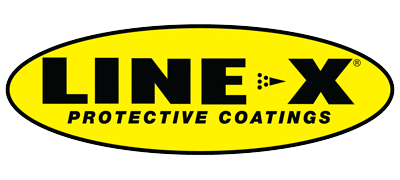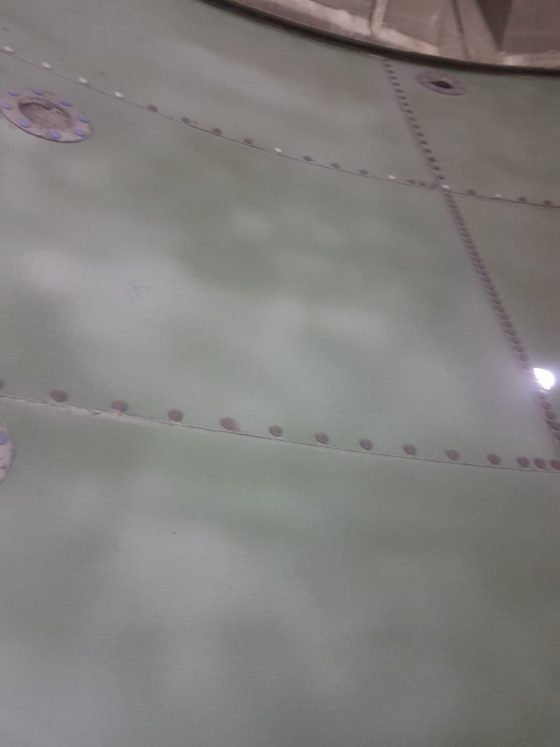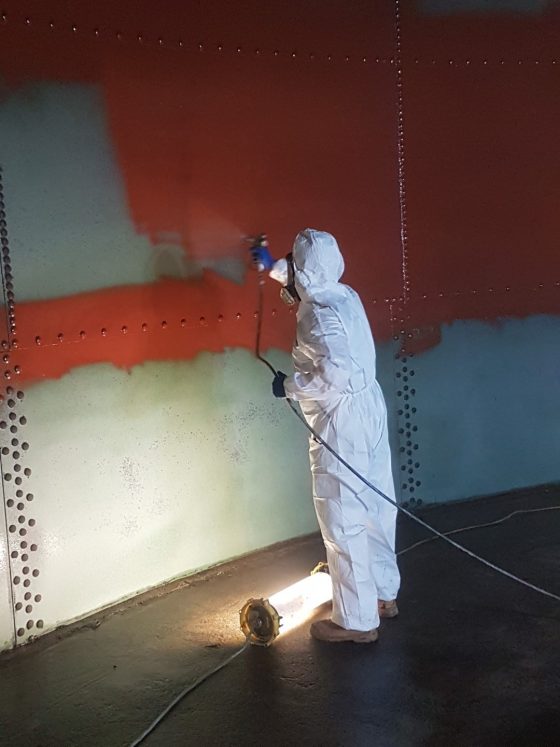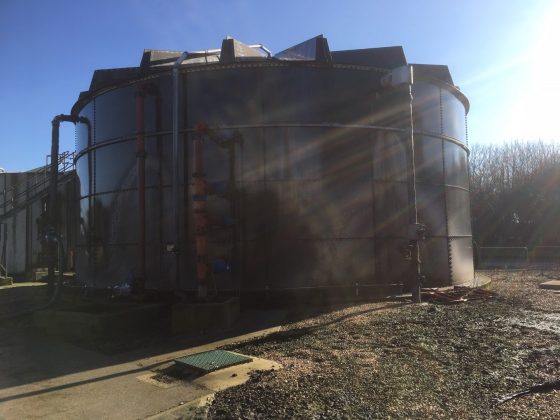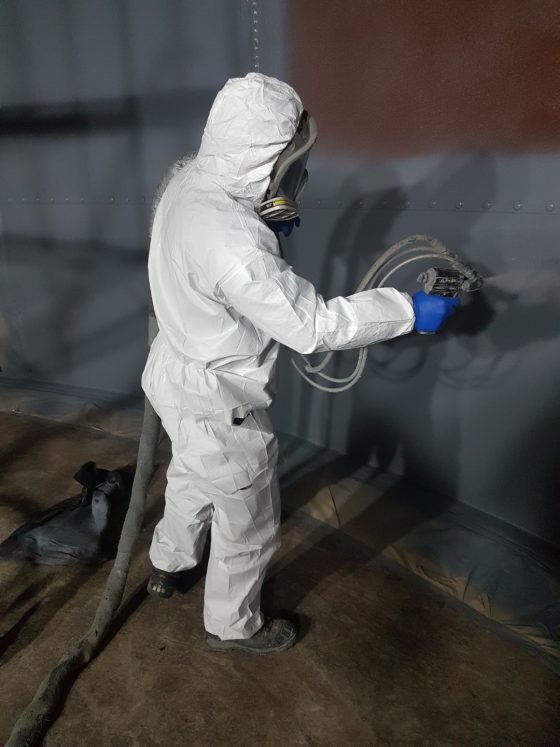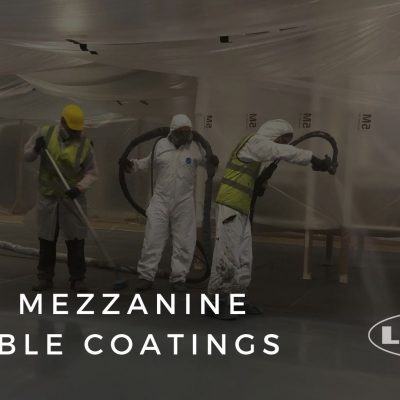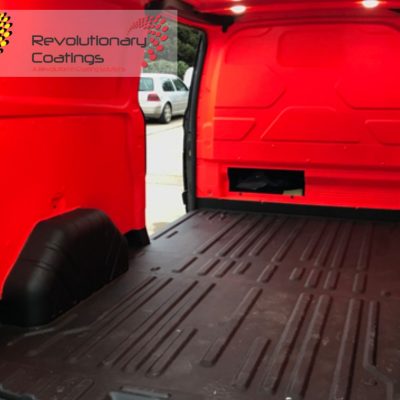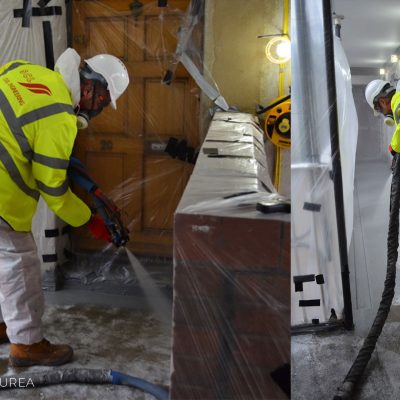Sludge tanks are prone to leaking and this was evident in this particular application. The glass fused steel sludge tank was leaking effluent into the surrounding environment after only 8 years in operation. Suspected damage to the glass enamel had led to perforations once exposed to the hydrogen sulphide, a biogenic sulphuric acid.
Industrial Coatings and Lining Specialists, Corroless Eastern selected LINE-X XS-350 pure polyurea as the most suited tank lining material.
Professional Preparation Equals Robust Long-lasting Lining System.
The tank had to be professionally cleaned before any works could commence.
Once clean, all of the existing sealant was mechanically removed. This is essential in this type of tank as due to the edges of the panels not being coated with the same glass enamel this is where some of the worst corrosion can be found. Often other contractors will simply over coat this sealant, leaving a corrosion cell in place from which degradation of the tank structure will continue.
The tank internals was then prepared by the method of abrasive blasting to both clean the glass enamel substrate and raise a mechanical profile for the new tank lining to adhere to. This blast profile was checked using a surface profile needle.
To ensure optimum adhesion of LINE-X XS-350 tank lining, all surfaces were washed using fresh water, with the inclusion of an anti-corrosion inhibitor to prevent the flash rusting of the steel.
The tank internals was checked for soluble salts as part of Corroless Eastern’s standard quality assurance. Following the first wash, the soluble salt levels were still found to be high, so a second wash was instigated. This was an excellent example of why a thorough testing and inspection regime is imperative when undertaking tank lining projects. If these soluble salts had been left in place, they could have led to premature tank lining failure as a result of osmotic blistering.
The cleanliness of the tank internal was checked using a dust tape test.
Technical Knowledge and Experience Helps Develop the Right System For Different Applications.
Glass fused steel is an extremely difficult surface to adhere to, even with abrasive blasting. The reason for this is that the surface profile created is not angular as per steel, meaning that many epoxy, polyurethane and polyester materials struggle to gain sufficient adhesion. A specialist primer, developed by Corroless Eastern, was applied to ensure a strong adhesion to the glass fused steel.
The primer was applied by method of airless spray to a thickness of 150 microns. To remove any risk of exceeding the re-coating window a pigmented quartz aggregate was dressed into the wet resin, to provide an excellent mechanical anchor for the polyurea tank lining to adhere to.
LINE-X Is Utilised as The Final Top Coat For a Full, Long-lasting Tank Lining System.
LINE-X XS-350 was spray applied to a thickness of 2mm. Frequent dry film thickness readings were taken during application.
A DC holiday spark test was conducted to ensure a pin hole free finish. A single pin hole is a point of failure in a tank lining.
Finally, termination points at the top and bottom of the polyurea lining were sealed using a polyurethane jointing compound to ensure a seamless finish.
As you can see by this case study, a high level of professionalism is carried out throughout the application process. Knowledge of the substrate, potential issues, primers and equipment is needed to provide a successful application. Numerous checks were made during the tank lining application to ensure the final tank liner would be fit for purpose for many years to come.
Both LINE-X UK (Head Office) and Corroless Eastern are extremely knowledgeable and have many years of experience with polyurea applications.
If you would like to find out more, please contact LINE-X UK on 08000 198676. Alternatively, you can use the contact form on line-x.co.uk
